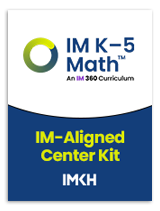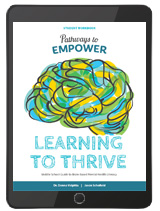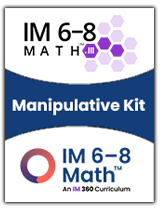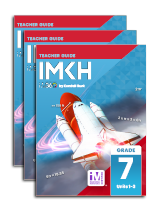Search Listing Name

product:
IM v.360: Grade 4 Center and Lesson Card Deck Kit
To help educators save time, IM v.360-aligned center kits provide all the printed resources to improve teaching efficiency and enhance student learning!
The Grade 4 center and lesson card deck kit includes center & lesson card decks only.
For a detailed list or information about bundle cen

product:
Pathways to Empower, Middle School: Learning to Thrive Student 1 Year License
The Pathways to Empower: Learning to Thrive middle school program is an understanding of neuroscience combined with simple, real-life applications that are unique, impactful, and engaging for middle school students. The curriculum’s core surrounds the Resilient Mindset Model, an approach that proactively helps students build healthy and resilient brain pathways. Their response to challenges is guided through the four S framework: self, situation, support and strategies.
The student workbook provides a comprehensive learni
product:
Nuclear Energy: Friend or Foe?: Examining Nuclear Power from a Systems Perspective
This unit for grades 6-8 creatively explores the effects of nuclear power waste. The topic is introduced through the eyes of the mayor of a town where a nuclear power plant is located. She must decide if the facility can expand its waste disposal techniques. What are the biological implications of radiation? What are the trade-offs with which society must live as we accept nuclear technologies into our lives? These questions are answered by students as they prepare to make recommendations about the use of the nuclear power plant in their f
product:
The World Turned Upside Down: The American Revolution
The World Turned Upside Down: The American Revolution
Grades 4-5
Intensive document analysis and exploration of the concept of cause and effect form the foundation of this unit exploring the Revolutionary period in American history. The World Turned Upside Down explores the chronology and major events leading up to and during the Revolutionary War and uses primary sources to demonstrate the social and political context.
product:
OpenSciEd Unit 7.2: Chemical Reactions (B) & Energy Spanish Student Edition
OpenSciEd Middle School science program addresses all middle school NGSS standards. This comprehensive science curriculum empowers students to question, design, investigate, and solve the world around them.
- Phenomenon Based - Centered around exploring phenomena or solving problems
- Driven by Student Questions - Storyline based on students’ questions and ideas
- Grounded in Evidence - Incremental building and revision of ideas based on evidence
- Collaborative - class and teacher figure



